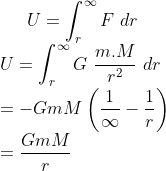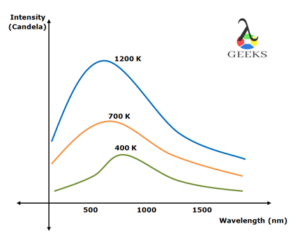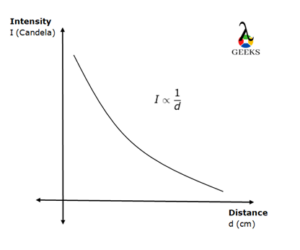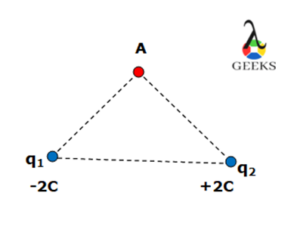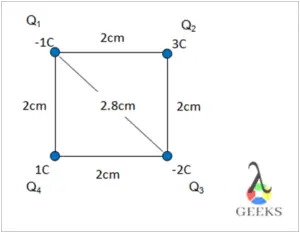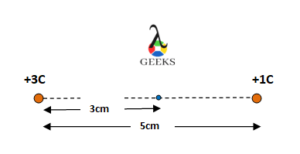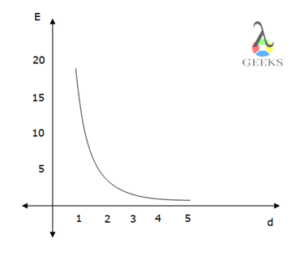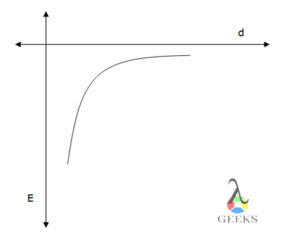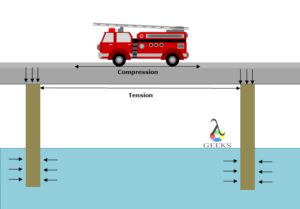The gravitational force is one of the fundamental forces of nature that governs the interactions between objects with mass. It is responsible for keeping our feet firmly planted on the ground, the moon orbiting around the Earth, and the planets revolving around the sun. In this article, we will explore the question of whether the gravitational force is positive or not. We will delve into the nature of gravitational force, its mathematical representation, and its effects on objects. So, let’s dive in and unravel the mysteries of this fascinating force.
Key Takeaways
- Gravitational force is always positive in magnitude, regardless of the direction.
- It is an attractive force that exists between any two objects with mass.
- The force is directly proportional to the product of the masses and inversely proportional to the square of the distance between them.
- Gravitational force plays a crucial role in determining the motion and stability of celestial bodies.
Is Gravitational Force Positive or Negative?
Explanation of the Positive Nature of Gravitational Force
When we think about gravity, we often associate it with the idea of attraction. We know that objects with mass are pulled towards each other, like the way the Earth pulls us towards its center. This force of attraction is known as gravitational force.
Gravitational force is always positive in nature. It is responsible for keeping our feet firmly planted on the ground and for holding the planets in their orbits around the Sun. The positive nature of gravitational force means that it always acts towards the center of mass of an object, pulling other objects towards it.
To understand why gravitational force is positive, let’s take a look at Newton’s law of universal gravitation. According to this law, the force of gravity between two objects is directly proportional to the product of their masses and inversely proportional to the square of the distance between their centers.
In simple terms, this means that the larger the mass of an object, the stronger its gravitational pull. Additionally, the closer two objects are to each other, the stronger the gravitational force between them. This positive nature of gravitational force ensures that objects are always attracted to each other, creating a stable and predictable universe.
Discussion on Why Gravitational Force is Denoted with a Negative Sign
While gravitational force itself is positive, it is often denoted with a negative sign in equations. This convention is used to indicate the direction of the force. In physics, it is common to use a negative sign to represent forces that act in the opposite direction of a chosen positive direction.
In the case of gravitational force, the chosen positive direction is usually upwards, away from the center of the Earth. Since gravity pulls objects towards the center of the Earth, which is in the opposite direction of the chosen positive direction, it is denoted with a negative sign.
By using a negative sign, we can easily differentiate between forces that act in the same direction as the chosen positive direction (which are positive) and forces that act in the opposite direction (which are negative). This convention helps us accurately represent and calculate the effects of gravitational force in various scenarios.
Explanation of Negative Gravity and Antigravity
Negative gravity and antigravity are concepts that often appear in science fiction and speculative theories. However, it is important to note that these concepts are not supported by current scientific understanding.
Negative gravity refers to a hypothetical scenario where gravity repels objects instead of attracting them. In this scenario, the force of gravity would act in the opposite direction, pushing objects away from each other. While this idea may seem intriguing, there is no evidence to suggest that negative gravity exists in our universe.
Antigravity, on the other hand, is a concept that involves the complete cancellation or neutralization of gravity. It suggests the ability to counteract or overcome the effects of gravitational force, allowing objects to float or levitate without any external support. While this concept is popular in science fiction, scientists have not yet discovered a way to achieve antigravity in reality.
What is Negative Gravitational Force?

Gravitational force is a fundamental force of nature that governs the interactions between objects with mass. It is responsible for the attraction between objects and plays a crucial role in determining the motion of celestial bodies, such as planets, stars, and galaxies. However, when we talk about negative gravitational force, things become a bit more intriguing.
Definition of Negative Gravitational Force
In the realm of classical physics, negative gravitational force is not a concept that exists. According to Newton’s law of universal gravitation, the gravitational force between two objects is always attractive and positive. It is directly proportional to the product of their masses and inversely proportional to the square of the distance between them. This means that the force of gravity always pulls objects towards each other, never pushing them away.
Circumstances where Negative Gravitational Force Occurs
While negative gravitational force is not a part of classical physics, it does find its place in certain theoretical frameworks, such as general relativity and quantum physics. These theories explore the nature of gravity in extreme conditions, where the effects of gravity become more complex.
One such circumstance is the concept of anti-gravity, which suggests the existence of a repulsive gravitational force. In this scenario, objects would experience a force that pushes them away from each other, contrary to the attractive force we are familiar with. However, it is important to note that anti-gravity is purely theoretical at this point and has not been observed or proven in practice.
Another instance where negative gravitational force is discussed is in the context of dark energy. Dark energy is a hypothetical form of energy that is believed to be responsible for the observed accelerated expansion of the universe. It is thought to exert a negative pressure, which counteracts the attractive force of gravity, leading to the expansion of space itself. However, the exact nature of dark energy is still not fully understood, and further research is needed to unravel its mysteries.
When is Gravitational Force Positive?

Explanation of when gravitational force is positive
Gravitational force is a fundamental force of nature that governs the interaction between objects with mass. It is responsible for the attraction between two objects and is always positive in nature. The positive sign indicates that the force is attractive, pulling objects towards each other.
According to Newton’s law of universal gravitation, the gravitational force between two objects is directly proportional to the product of their masses and inversely proportional to the square of the distance between their centers. The formula for calculating the gravitational force is:
![]()
In this equation, ( F ) represents the magnitude of the gravitational force, ( G ) is the gravitational constant, ( m_1 ) and ( m_2 ) are the masses of the two objects, and ( r ) is the distance between their centers.
The positive nature of the gravitational force implies that it always acts towards the center of mass of an object. This means that the force is attractive, pulling objects closer together.
Factors influencing the positivity of gravitational force
Several factors influence the positivity of the gravitational force between two objects. These factors include:
-
Mass: The greater the mass of an object, the stronger its gravitational pull. As the masses of two objects increase, the gravitational force between them also increases. This positive force is responsible for keeping celestial bodies, such as planets and stars, in their orbits.
-
Distance: The distance between two objects also affects the gravitational force between them. As the distance increases, the force of gravity decreases. However, regardless of the distance, the gravitational force remains positive, indicating an attractive force.
-
Direction: The direction of the gravitational force is always towards the center of mass of an object. This means that the force acts along the line connecting the centers of the two objects. The positive sign indicates that the force is attractive, pulling the objects closer together.
Examples of positive gravitational force
Positive gravitational force can be observed in various scenarios. Here are a few examples:
-
Falling objects: When an object is dropped from a height, it experiences a positive gravitational force that pulls it towards the Earth’s center. This force causes the object to accelerate downwards, leading to its fall.
-
Planetary motion: The positive gravitational force between the Sun and the planets in our solar system keeps them in their respective orbits. The force of gravity acts as a centripetal force, continuously pulling the planets towards the Sun.
-
Tides: The gravitational force between the Moon and the Earth causes the ocean tides. The Moon’s gravitational pull creates a bulge in the ocean on the side facing the Moon, resulting in high tide. On the opposite side, there is also a high tide due to the gravitational force pulling the Earth away from the water.
In all these examples, the positive gravitational force is responsible for the attractive interaction between objects, leading to various observable phenomena.
How is Gravitational Force Positive?

Explanation of work done due to gravitational force
Gravitational force is a fundamental force of nature that exists between any two objects with mass. It is responsible for the attraction between objects and plays a crucial role in determining the motion of celestial bodies, as well as everyday objects on Earth. But is gravitational force always positive? Let’s explore.
When we talk about the positivity of gravitational force, we are referring to the work done by this force. Work, in physics, is defined as the transfer of energy that occurs when a force is applied to an object and causes it to move in the direction of the force. In the case of gravitational force, work can be positive, negative, or zero, depending on the circumstances.
Gravitational force is generally considered positive when it does work on an object by causing it to move in the direction of the force. This occurs when an object is falling freely under the influence of gravity. For example, when you drop a ball from a height, gravity pulls it downward, and as a result, the ball gains kinetic energy. In this case, the work done by the gravitational force is positive because the force and the displacement of the ball are in the same direction.
Examples of positive work done by gravitational force
To further illustrate the concept of positive work done by gravitational force, let’s consider a few examples:
-
Waterfall: When water flows down a waterfall, gravity pulls it downward, causing it to gain kinetic energy. The work done by gravity in this case is positive because the force of gravity and the displacement of the water are in the same direction.
-
Roller Coaster: As a roller coaster car descends from a peak, gravity pulls it downward, accelerating it and increasing its speed. The work done by gravity is positive because the force of gravity and the displacement of the car are in the same direction.
-
Satellite Orbit: Satellites in orbit around the Earth experience a gravitational force that keeps them in their orbits. This force does positive work on the satellite because it continuously changes the direction of the satellite‘s velocity, keeping it in a stable orbit.
In all these examples, the gravitational force is positive because it does work on the objects involved, causing them to move in the direction of the force.
It’s important to note that gravitational force can also do negative work in certain situations. For instance, when an object is thrown upwards, gravity opposes its motion, and the work done by gravity is negative. Similarly, when an object is on an inclined plane and moves against the force of gravity, the work done by gravity is also negative.
Is Gravitational Force Negative?
Explanation of why gravitational force is not inherently negative
Gravitational force is a fundamental force of nature that governs the interaction between objects with mass. It is responsible for the attraction between objects and is described by Newton’s law of universal gravitation. While the gravitational force can be represented by a negative sign in the equation, it is important to understand that this negative sign does not imply that the force itself is negative.
The negative sign in the gravitational force equation signifies the direction of the force, rather than its positivity or negativity. It indicates that the force is attractive in nature, pulling objects towards each other. This convention helps us understand the behavior of objects under the influence of gravity.
Interpretation of negative sign in the gravitational force equation
In the equation for gravitational force, the negative sign is used to indicate the direction of the force. It signifies that the force acts in the opposite direction to the displacement between the two objects. For example, if we consider two masses, A and B, the negative sign indicates that the force of gravity between them acts towards each other.
This interpretation is consistent with our everyday experience of gravity. When we drop an object, it falls towards the Earth due to the gravitational pull. The negative sign in the equation helps us understand that the force of gravity is directed towards the center of the Earth.
Examples where gravitational force can be considered negative
While the gravitational force itself is not inherently negative, there are situations where it can be considered negative based on the relative positions and masses of the objects involved.
-
Gravitational Repulsion: In some cases, the gravitational force between two objects can be repulsive rather than attractive. This occurs when the objects have like charges or masses of the same sign. For example, if two positively charged particles are placed close to each other, the gravitational force between them would be repulsive.
-
Escape Velocity: When an object is launched with sufficient velocity from the surface of a planet, it can escape the planet’s gravitational pull. At this point, the gravitational force can be considered negative as it acts against the object’s motion, slowing it down until it eventually comes to a stop and starts moving away from the planet.
-
Gravitational Slingshot: In space missions, gravitational slingshot maneuvers are used to gain speed or change the trajectory of spacecraft. During these maneuvers, the gravitational force of a planet or other celestial body is used to accelerate the spacecraft. In some cases, the direction of the gravitational force can be considered negative as it opposes the initial motion of the spacecraft.
When is Gravitational Force Negative?

Description of circumstances leading to negative gravitational force
Gravitational force is a fundamental force of nature that governs the interactions between objects with mass. It is responsible for the attractive force between two objects and is always positive in magnitude. However, there are certain circumstances where the gravitational force can be considered negative in a relative sense.
One such circumstance is when there is a repulsive gravitational force between two objects. According to Newton’s law of universal gravitation, the gravitational force between two objects is directly proportional to the product of their masses and inversely proportional to the square of the distance between their centers. In cases where the masses have opposite signs, the gravitational force can be repulsive rather than attractive.
Another scenario where the gravitational force can be considered negative is when it opposes the motion of an object. For example, if an object is thrown upwards, the force of gravity acts in the opposite direction, opposing the object’s motion. In this case, the gravitational force can be seen as negative because it acts against the direction of the object’s velocity.
Examples of negative gravitational force
To better understand the concept of negative gravitational force, let’s consider a few examples:
-
Gravitational repulsion between two charged objects: In certain situations, objects can have a net charge, resulting in an additional force of repulsion or attraction alongside the gravitational force. If the repulsive force due to charge is greater than the attractive gravitational force, the net gravitational force can be negative.
-
Escape velocity: When an object is launched with sufficient velocity from the surface of a planet, it can overcome the gravitational pull and escape the planet’s gravitational field. At this point, the gravitational force can be considered negative as it acts against the motion of the object.
-
Gravitational force near a black hole: Near a black hole, the gravitational force is incredibly strong. As an object approaches the event horizon, the force of gravity becomes so intense that it can be considered negative, pulling objects inward with immense strength.
It’s important to note that while the gravitational force can be considered negative in these scenarios, the magnitude of the force remains positive. The negative sign simply indicates the direction of the force relative to the motion or interaction of the objects involved.
How is Gravitational Force Negative?
Explanation of work done leading to negative gravitational force
When we think about gravitational force, we often associate it with the idea of attraction between objects. However, it is important to note that gravitational force can also be negative. In this section, we will explore the concept of negative gravitational force and understand how it arises.
To understand negative gravitational force, we need to first grasp the concept of work done. In physics, work is defined as the transfer of energy that occurs when a force is applied to an object, causing it to move. The work done can be positive or negative, depending on the direction of the force and the displacement of the object.
In the case of gravitational force, the work done can be negative when the force acts in a direction opposite to the displacement of the object. This means that the gravitational force is doing work against the motion of the object, effectively slowing it down or bringing it to a stop.
Examples of negative work done by gravitational force
Let’s consider a few examples to better understand negative work done by gravitational force.
-
Throwing a ball upwards: When we throw a ball upwards, the force of gravity acts in the opposite direction to the ball’s displacement. As the ball rises, the gravitational force slows it down until it eventually comes to a stop at its highest point. During this upward motion, the work done by the gravitational force is negative.
-
Climbing a hill: Imagine climbing a steep hill. As you ascend, the force of gravity is acting against your upward motion, making it harder for you to climb. The work done by gravity in this case is negative because it is opposing your displacement.
-
Slowing down a moving object: Consider a car moving downhill. As the car descends, the force of gravity acts in the opposite direction to its motion, causing it to slow down. The work done by gravity in this situation is negative because it is acting against the car’s displacement.
In all these examples, the negative work done by gravitational force is a result of the force acting in a direction opposite to the displacement of the object. It is important to note that negative work done does not imply repulsion between objects, but rather a force that opposes the motion.
Is Gravitational Constant Negative or Positive?
Clarification that gravitational constant is a positive quantity
When discussing the nature of the gravitational constant, it is important to clarify that it is indeed a positive quantity. The gravitational constant, denoted by the symbol “G,” is a fundamental constant in physics that appears in Newton’s law of universal gravitation. It represents the strength of the gravitational force between two objects with mass.
The gravitational constant is a fixed value that does not change regardless of the masses involved. It is a fundamental property of the universe and plays a crucial role in determining the magnitude of the gravitational force. Despite its significance, the gravitational constant is not related to the positive or negative nature of the gravitational force itself.
Explanation of the role of gravitational constant in gravitational force equation
The gravitational constant is a key component in the equation that describes the gravitational force between two objects. This equation, known as Newton’s law of universal gravitation, states that the force of gravity between two objects is directly proportional to the product of their masses and inversely proportional to the square of the distance between them.
Mathematically, the equation can be expressed as:
F = G * (m1 * m2) / r^2
Where:
– F represents the magnitude of the gravitational force between the two objects,
– G is the gravitational constant,
– m1 and m2 are the masses of the two objects, and
– r is the distance between the centers of the two objects.
The gravitational constant, G, acts as a scaling factor in this equation. It determines the strength of the gravitational force between the objects. Without the gravitational constant, the equation would not accurately represent the magnitude of the force.
It is important to note that the gravitational constant, being a positive quantity, does not dictate the direction of the gravitational force. The direction of the force is always attractive, pulling objects towards each other. The positive value of the gravitational constant ensures that the force is always attractive and never repulsive.
Frequently Asked Questions
What is the gravitational force between two objects of given masses and separation?
The gravitational force between two objects is the force of attraction that exists between them due to their masses. This force is described by Newton’s law of universal gravitation, which states that every particle in the universe attracts every other particle with a force that is directly proportional to the product of their masses and inversely proportional to the square of the distance between their centers.
To calculate the gravitational force between two objects, you can use the formula:
F = (G * m1 * m2) / r^2
Where:
– F is the gravitational force between the objects,
– G is the gravitational constant (approximately 6.67430 × 10^-11 N m^2/kg^2),
– m1 and m2 are the masses of the objects, and
– r is the distance between the centers of the objects.
What is the escape velocity of Earth?
The escape velocity of Earth is the minimum velocity an object needs to escape the gravitational pull of Earth and enter space. It is the speed required for an object to overcome the gravitational force pulling it back to Earth. The escape velocity depends on the mass and radius of the planet.
For Earth, the escape velocity is approximately 11.2 kilometers per second (km/s) or 40,270 kilometers per hour (km/h). This means that for an object to leave Earth’s gravitational field, it needs to be launched with a velocity of at least 11.2 km/s.
What is the gravity of an object with a given mass and radius on Earth?
The gravity of an object with a given mass and radius on Earth refers to the gravitational force experienced by that object when it is near the surface of the Earth. The force of gravity on an object depends on its mass and the mass of the Earth, as well as the distance between the object and the center of the Earth.
The formula to calculate the gravitational force on an object near the surface of the Earth is:
F = (G * m * M) / r^2
Where:
– F is the gravitational force on the object,
– G is the gravitational constant,
– m is the mass of the object,
– M is the mass of the Earth, and
– r is the distance between the object and the center of the Earth.
What is escape velocity?
Escape velocity is the minimum velocity required for an object to escape the gravitational pull of a celestial body, such as a planet or a moon. It is the speed at which an object needs to be launched in order to overcome the gravitational force and move away from the celestial body without being pulled back.
Escape velocity depends on the mass and radius of the celestial body. It is calculated using the formula:
v = sqrt((2 * G * M) / r)
Where:
– v is the escape velocity,
– G is the gravitational constant,
– M is the mass of the celestial body, and
– r is the distance between the object and the center of the celestial body.
Frequently Asked Questions
1. Is gravitational force positive or negative?
Gravitational force can be either positive or negative, depending on the direction of the force. It is positive when it acts towards the center of attraction and negative when it acts in the opposite direction.
2. Can gravitational potential be positive?
Yes, gravitational potential can be positive. Gravitational potential represents the potential energy per unit mass at a specific point in a gravitational field. It can be positive or negative depending on the reference point chosen.
3. Where is the gravitational force doing positive work?
The gravitational force does positive work when an object is moving in the same direction as the force. For example, when an object is falling towards the Earth, the gravitational force does positive work on the object.
4. Why is gravitational force negative?
Gravitational force can be negative when it acts in the opposite direction to the chosen positive direction. This convention is often used to indicate the opposing nature of the force.
5. Is gravitational force good or bad?
Gravitational force is neither good nor bad. It is a fundamental force of nature responsible for the attraction between objects with mass. It plays a crucial role in the formation and stability of celestial bodies.
6. Does gravitational force do positive work?
Yes, gravitational force can do positive work. When an object moves in the same direction as the gravitational force, the force does positive work on the object, increasing its kinetic energy.
7. Can gravity be positive?
Gravity itself is not positive or negative. It is a natural phenomenon that arises due to the presence of mass. However, the effects of gravity can be positive or negative depending on the context and direction of the force.
8. What is gravitational potential force?
Gravitational potential force is a term that is not commonly used. However, gravitational potential energy is a concept related to the force of gravity. It represents the potential energy stored in an object due to its position in a gravitational field.
9. Is work done by gravitational force positive or negative?
The work done by gravitational force can be either positive or negative. It depends on the displacement of the object and the direction of the force. If the displacement is in the same direction as the force, the work is positive; otherwise, it is negative.
10. Is gravitational force negative?
Gravitational force can be negative when it acts in the opposite direction to the chosen positive direction. This convention is often used to indicate the opposing nature of the force.
Also Read:
- Central force examples
- Atomic force microscopy imaging techniques
- Conservative force examples
- Boiling point and molecular forces
- Example of net force
- Contact force examples
- Atomic force microscopy
- Resultant force and net force
- How organisms adapt to varying accelerative forces
- Gravitational force formula 2




